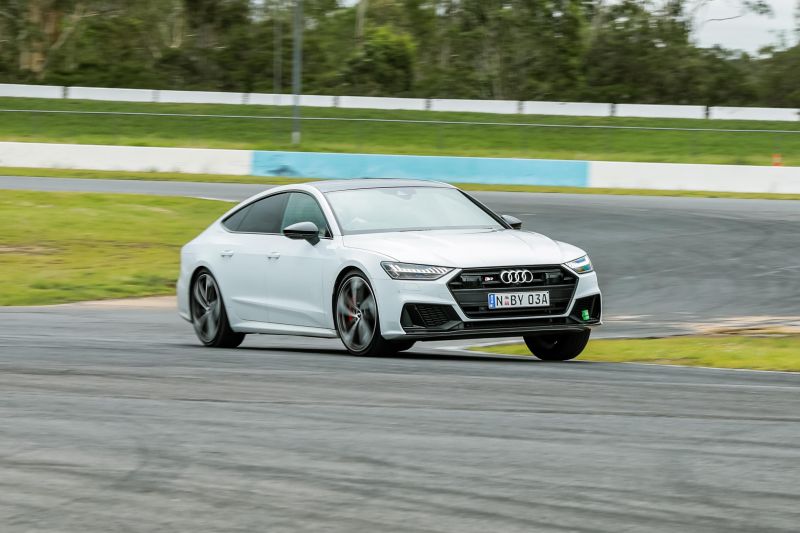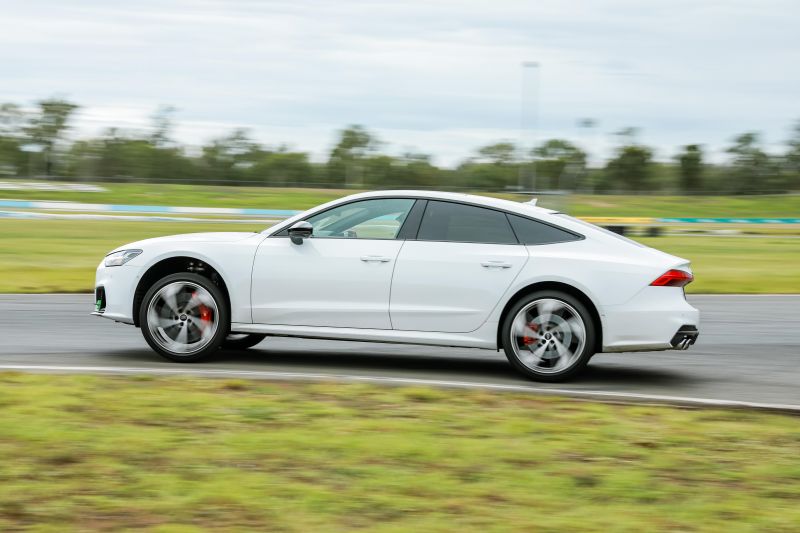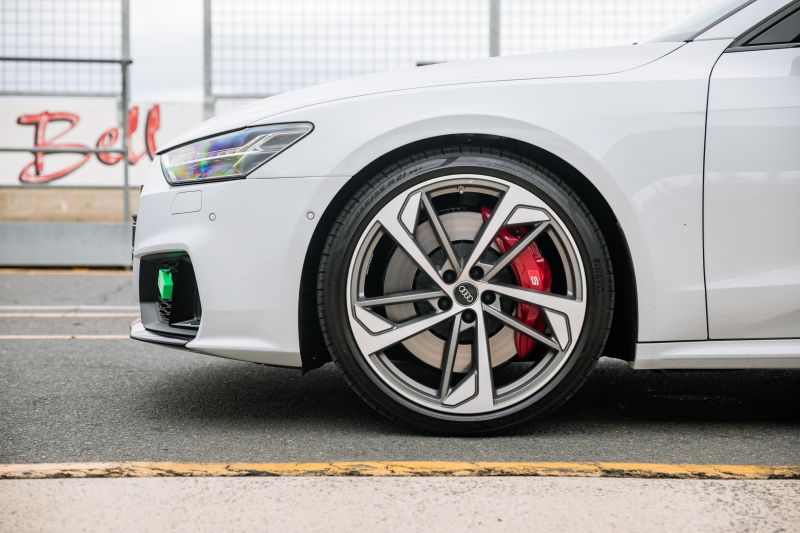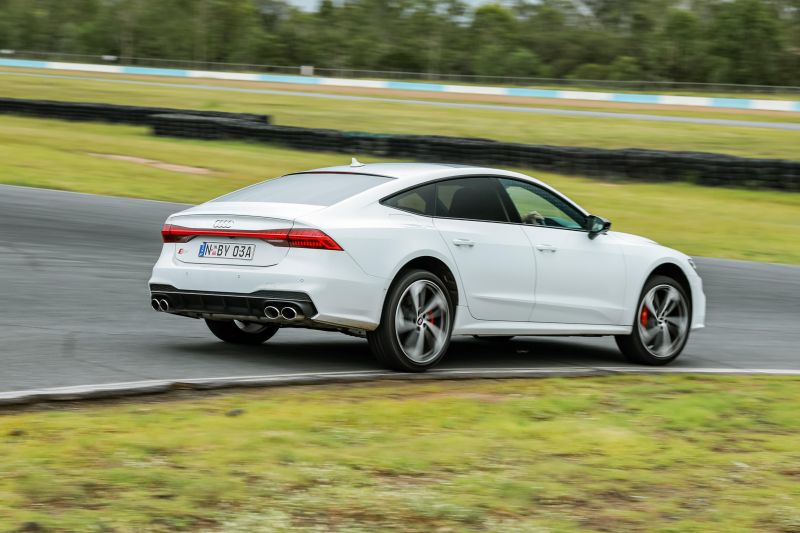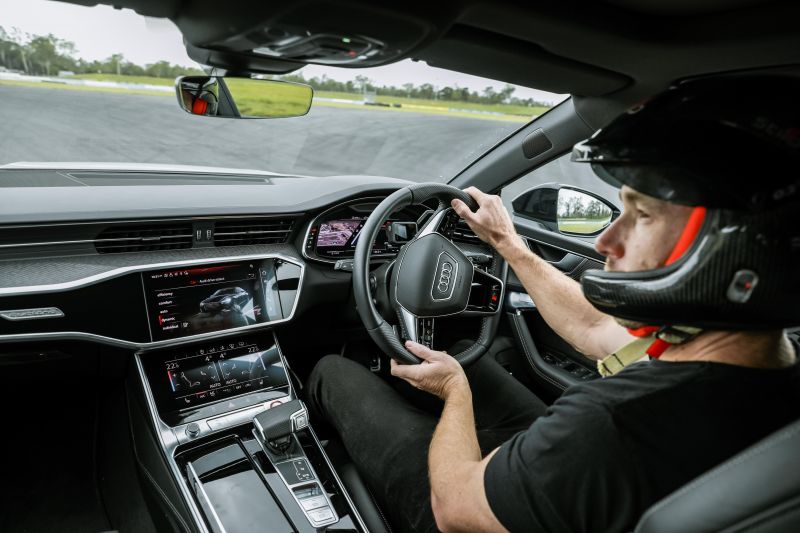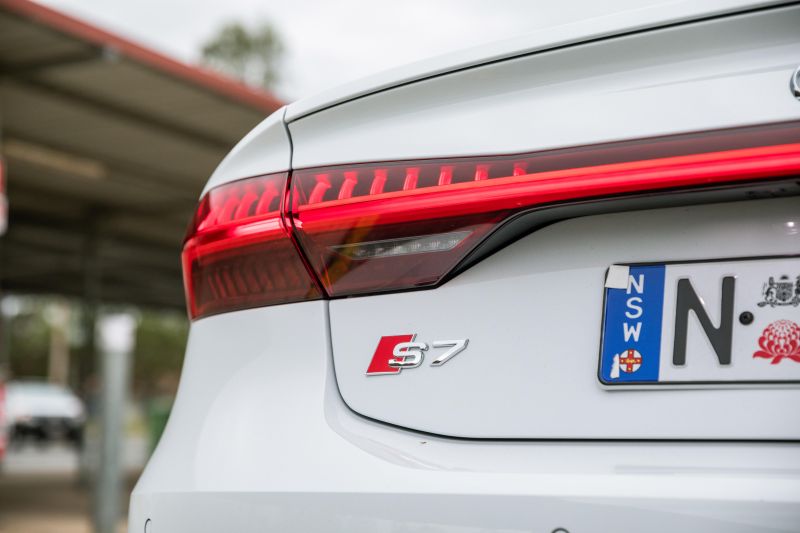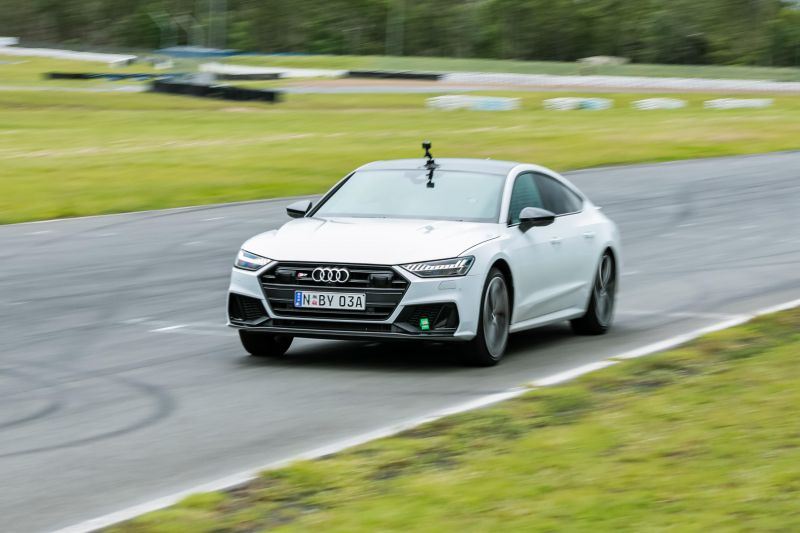Overall Track Performance
The Audi S7 is a very well put together package with every piece fitting nicely together, complementing each other without one particular area standing out.
With such good fundamentals and effortless power, this is a car that you can enjoy on many different levels and offers an fun and engaging drive experience for a premium four-door coupe.
Engine
The 2.9 litre twin-turbo V6 was super responsive and offered a depth of power and torque from very low in the rev range. That’s no real surprise with 331kW at 6700rpm and a full torque curve of 600Nm from 1900 to 5000rpm.
The really cool thing with this engine is the 48V mild-hybrid system (MHEV) that assists with turbo lag.
In a similar vein to what you would expect from a rally car, this primes the turbo system so the normal delay in boost is negated.
As great as this system felt on the track, it’s even a bigger benefit on the road. On the track you can predict the lag and always be in the right gear, but on the road, you need a more responsive and reactive engine and this is really a highlight for the Audi S7.
It could handle a little more top-end power and felt like it just ran out of performance when you went high in the rev range.
I easily managed a 0-100 time of 4.75 seconds using the launch control function, which was just off the 4.6-second claim. Considering this is not something we focus on in the test and the car was full of fuel, this was really impressive.
Braking
The brakes were super stable and consistent over all the laps, which is impressive for what is a pretty heavy car.
It achieved some of the best braking performance numbers we have seen, with 100-0 in just 2.75 seconds, just off some of the best results we have seen.
My only complaint with the brakes is the amount of assistance, which hurts your ability to modulate the pressure.
Chassis
For a car that weighs 2040kg (kerb), the Audi S7 chassis has some really good fundamentals and was far from out of its depth on the track.
When I managed the weight well, the car would rotate nicely not fall over. If I over committed on corner entry, it did have a slight tendency to understeer which would then result in some late exit oversteer.
When this occurred on a flying lap it cost a lot of time, but it only happened if you over drove.
Overall, I enjoyed how I could attack with the car on track and it responded accordingly. It had many of the attributes of a smaller, more nimble car, but in a bigger package.
Transmission and Differentials
The eight-speed automatic transmission was actually pretty good for a conventional auto.
It did struggle a little bit on the speed and timing of the downshifts, which in turn affects the whole entry faze of the corner. But to be fair, I actually thought it was a dual-clutch when I was on the track so Audi have done a great job of dragging this in the direction of a DCT in terms of response.
The differentials worked pretty well, quite free on corner entry and more than enough locking on exit to manage the traction. The balance front to rear was very neutral, personally I would have liked a little more locking in from the rear to help continue rotation from mid-corner to exit.
The Dynamic Steering Package was not fitted to the car we tested, which adds the quattro sport differential and would have most likely helped in this area.
Suspension
No real surprise the suspension is on the softer side, but it actually works pretty well on the track.
The ability to lower the car with auto-levelling air suspension, definitely helps on the track, but still doesn’t get away from the size of the car.
The control of the car is reasonably good and it actually builds up support when you load it in the corner. So despite the fact it was moving around a lot, it was all done in a controlled fashion and was very manageable.
Steering
The steering was good but lacked a little bit of feedback that can probably be attributed towards the comfort of the suspension.
It was also a little lighter than what I prefer on the track.
Wheels and Tyres
The 21-inch 255/35 Pirelli P Zero tyres did a good job, but were not the highlight of the experience on the track.
I think they are a good compromise for the intended job, but didn’t offer outright performance on the track.
Driver Aids (Electronics)
I did all the laps with everything in dynamic mode and the gearbox in manual mode, I turned the traction control and ESC off and had the air suspension fully lowered as well.
There was nothing that really worried me in these settings and because the fundamentals of the chassis were very good. I never had any scary moments in the S7.
Cockpit (Ergonomics)
The seating position was excellent and also offered great lateral support, which is a bit unusual for a car in this segment but was a great bonus for when you’re attacking the corners. You do really feel like you’re part of the car.
The steering wheel was also very good, it was nice to have the slightly abrasive perforated finish for grip, but I do prefer an alcantara material for when it gets a bit more intense on track.
I would have liked a drive mode button on the steering wheel as well, but the rest of the interior was really nice.
Lap Time
Let’s get straight to the point, the lap time of 60.22 seconds is a little bit disappointing, especially considering that fundamentally it was actually enjoyable to drive.
I almost can’t believe that it is almost 3.0 seconds slower than the BMW M550i, which goes to show how crazy fast that time was.
With the BMW, it is just a bit more on edge chassis wise and the engine just dominated. Where the Audi S7 is a more balanced package with everything working in harmony.
Overall you will not be disappointed with the Audi S7, there are no major weaknesses and it is a real drivers car!
Atko’s 3:
- Manage the energy of the car on corner entry
- Releasing the brake pedal smoothly is important to nailing the corner
- Don’t rush the down shifts, the gearbox won’t respond
MORE: 2021 Audi S7 Sportback review
MORE: Audi S7 news, reviews, comparisons and videos






